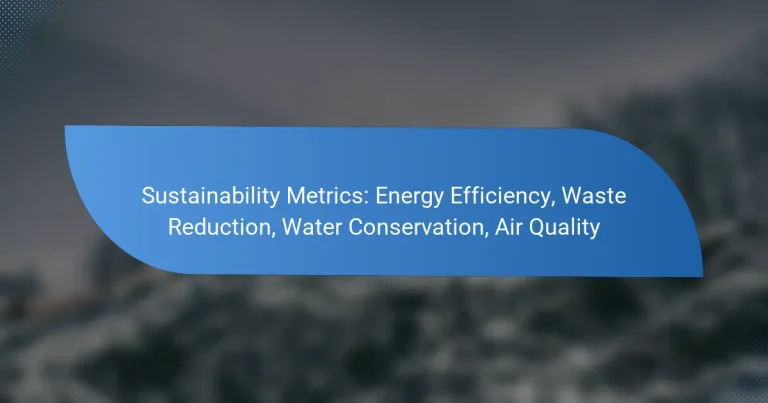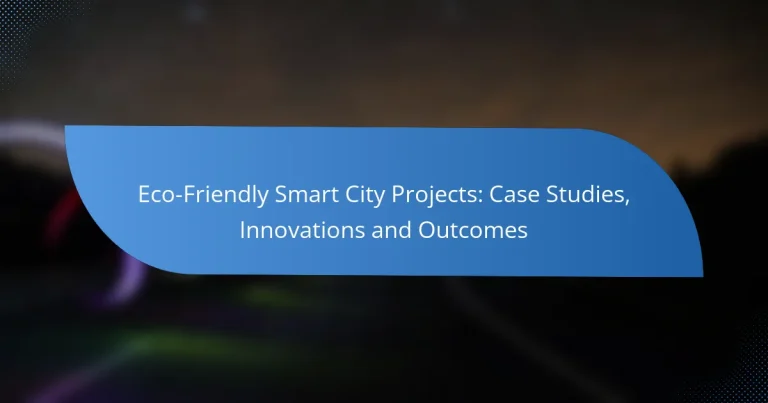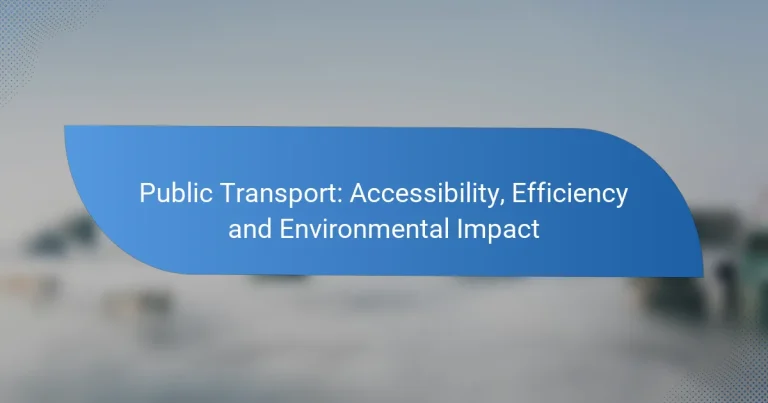Waste Management Innovations: Recycling, Composting, Technology and Community Engagement
Innovations in waste management are transforming how we handle refuse, emphasizing efficiency, sustainability, and community participation. With advancements like smart waste bins, automated sorting technologies, and enhanced recycling methods, the landscape of waste disposal is rapidly evolving. Additionally, effective composting practices are turning organic waste into valuable resources, further promoting environmental stewardship.
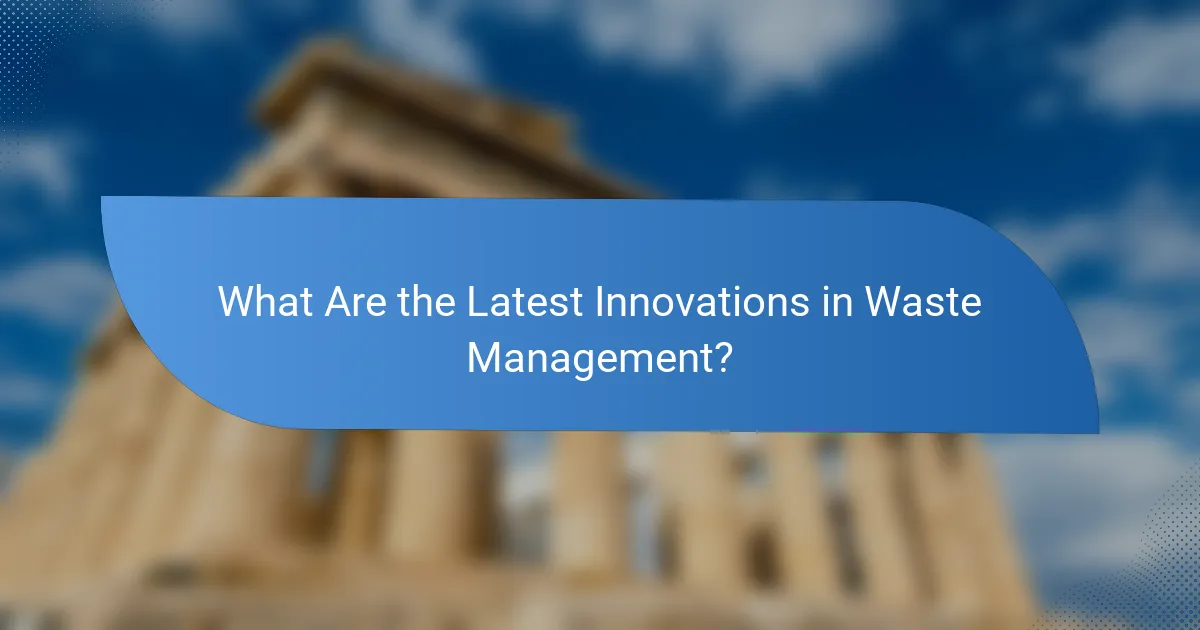
What Are the Latest Innovations in Waste Management?
The latest innovations in waste management focus on enhancing efficiency, reducing environmental impact, and promoting community involvement. Key advancements include smart waste bins, automated sorting technologies, waste-to-energy systems, advanced recycling techniques, and the use of biodegradable materials.
Smart Waste Bins
Smart waste bins are equipped with sensors that monitor fill levels and optimize collection routes. This technology reduces unnecessary pickups, saving fuel and labor costs while minimizing emissions.
Some smart bins can also sort waste automatically, distinguishing between recyclables and general waste. This feature encourages proper disposal habits and increases recycling rates within communities.
Automated Sorting Technology
Automated sorting technology uses advanced machinery, including AI and machine learning, to identify and separate different types of materials. This process significantly improves the efficiency of recycling facilities.
By employing optical sensors and robotic arms, these systems can achieve sorting accuracy rates of over 90%. This reduces contamination in recycling streams and enhances the quality of recycled materials.
Waste-to-Energy Systems
Waste-to-energy systems convert non-recyclable waste into usable energy through combustion or anaerobic digestion. This process not only reduces landfill waste but also generates electricity or heat for local communities.
These systems can significantly lower greenhouse gas emissions compared to traditional waste disposal methods. However, they require careful management to address air quality concerns and regulatory compliance.
Advanced Recycling Techniques
Advanced recycling techniques, such as chemical recycling, break down plastics into their original monomers, allowing for infinite recyclability. This method addresses the limitations of traditional recycling, which often degrades material quality over time.
Implementing these techniques can lead to higher recycling rates and a reduction in the demand for virgin materials. However, the technology is still developing and may require significant investment to scale effectively.
Biodegradable Materials
Biodegradable materials are designed to decompose naturally, reducing the burden on landfills. Innovations in this area include bioplastics made from renewable resources, which can break down in composting environments.
While these materials offer environmental benefits, they require specific conditions to decompose effectively. It is essential for consumers and businesses to understand the proper disposal methods to maximize their effectiveness.

How Is Recycling Evolving in 2023?
Recycling in 2023 is marked by advancements in technology and community engagement, enhancing efficiency and participation. Innovations such as artificial intelligence and improved collection systems are reshaping how materials are sorted and processed, while community programs are fostering greater public involvement.
Increased Use of AI in Recycling
Artificial intelligence is revolutionizing recycling by automating sorting processes and improving accuracy. AI systems can identify and separate recyclable materials from waste with high precision, significantly reducing contamination rates.
For example, smart recycling bins equipped with AI can analyze the contents and provide feedback to users on proper disposal methods. This technology not only streamlines operations but also educates the public on recycling best practices.
Improved Collection Systems
Modern collection systems are becoming more efficient through the use of smart technology and data analytics. Many cities are implementing sensor-equipped bins that monitor fill levels, optimizing collection routes and schedules to reduce costs and emissions.
These systems can lead to a reduction in collection frequency, saving municipalities money while ensuring that bins are emptied before overflowing. Additionally, some areas are adopting dual-stream collection, separating recyclables and organics at the curb to enhance processing efficiency.
Community Recycling Programs
Community engagement is crucial for effective recycling, and many local governments are launching programs to increase participation. Initiatives may include educational workshops, neighborhood clean-up events, and incentive programs that reward residents for recycling correctly.
For instance, offering discounts on utility bills or local services for households that consistently recycle can motivate more residents to participate. These programs not only improve recycling rates but also foster a sense of community responsibility towards waste management.

What Are Effective Composting Methods?
Effective composting methods convert organic waste into nutrient-rich soil amendments through natural decomposition processes. The best methods depend on the scale of composting, available materials, and community or individual needs.
Home Composting Solutions
Home composting is a practical way for individuals to recycle kitchen scraps and yard waste. Common methods include using compost bins, tumblers, or simple piles. A balanced mix of green materials (like fruit scraps) and brown materials (like dry leaves) is essential for successful composting.
To start, choose a location that is easily accessible and has good drainage. Aim for a compost pile size of about 3 feet by 3 feet to maintain heat and moisture levels. Regularly turning the pile helps aerate it, speeding up the decomposition process.
Community Composting Initiatives
Community composting initiatives bring residents together to manage organic waste collectively, often through shared composting sites. These programs can significantly reduce landfill waste while providing local gardens with rich compost. They typically involve workshops to educate participants on composting techniques.
Engagement is key; communities can set up drop-off points or communal bins for residents to contribute their organic waste. Local governments may support these initiatives with funding or resources, promoting sustainability and community involvement.
Industrial Composting Technologies
Industrial composting technologies are designed to process large volumes of organic waste efficiently. These systems often utilize controlled environments to optimize decomposition, including temperature and moisture regulation. Aerated static piles and in-vessel composting are common methods used in this setting.
These facilities can handle a diverse range of materials, including food waste from restaurants and agricultural byproducts. Compliance with local regulations is crucial, as industrial composting must meet specific standards to ensure safety and environmental protection.
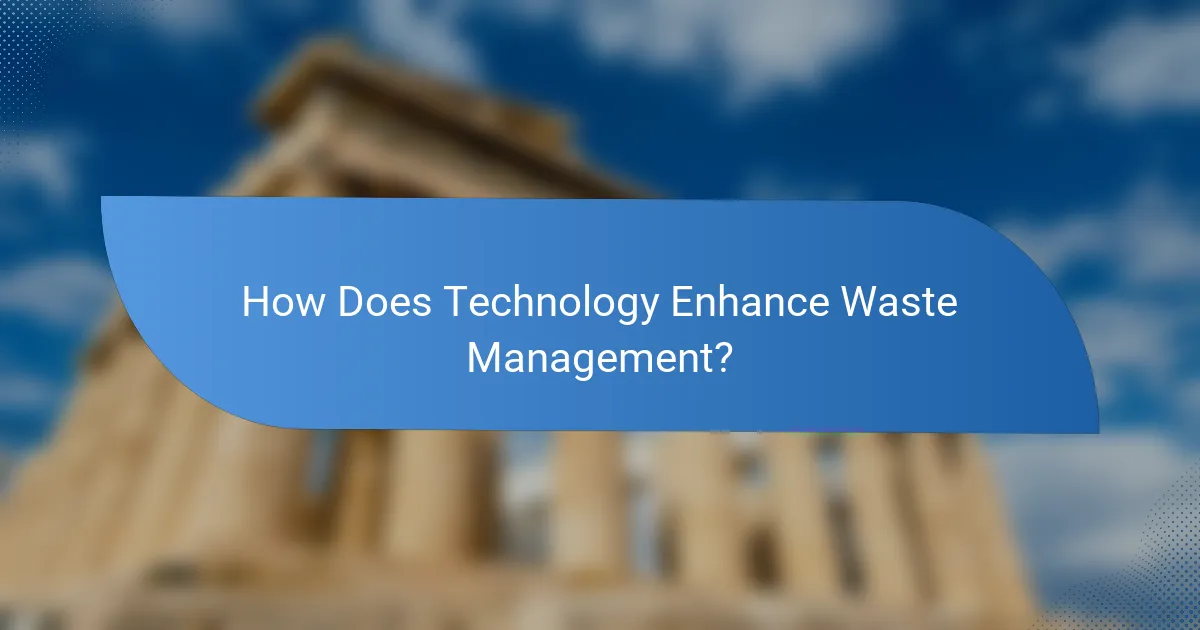
How Does Technology Enhance Waste Management?
Technology enhances waste management by streamlining processes, improving efficiency, and increasing transparency. Innovations such as IoT devices, blockchain, and mobile applications are transforming how waste is monitored, tracked, and recycled.
IoT in Waste Monitoring
The Internet of Things (IoT) plays a crucial role in waste monitoring by using sensors to collect real-time data on waste levels in bins and containers. This technology allows municipalities to optimize collection routes and schedules, reducing operational costs and emissions.
For example, smart bins equipped with sensors can alert waste management services when they are full, ensuring timely pickups. This not only enhances efficiency but also minimizes overflow and littering in public spaces.
Blockchain for Waste Tracking
Blockchain technology offers a secure and transparent method for tracking waste from its source to disposal. By creating an immutable record of waste transactions, stakeholders can ensure accountability and compliance with regulations.
For instance, companies can use blockchain to verify the recycling processes of their waste, providing proof that materials are being processed correctly. This can enhance corporate responsibility and consumer trust.
Mobile Apps for Recycling
Mobile applications are increasingly being used to educate and engage the public in recycling efforts. These apps can provide users with information on how to recycle specific materials, locate nearby recycling centers, and track their recycling habits.
Some popular apps even gamify recycling, encouraging users to participate through rewards and challenges. This community engagement can significantly boost recycling rates and foster a culture of sustainability.

What Role Does Community Engagement Play?
Community engagement is crucial for effective waste management as it fosters participation and awareness among residents. By involving the community, initiatives become more impactful, leading to better recycling rates and sustainable practices.
Awareness Campaigns
Awareness campaigns educate the public about the importance of waste management and proper recycling techniques. These campaigns can include social media outreach, local events, and informational flyers distributed in neighborhoods.
Effective campaigns often highlight the environmental benefits of recycling and composting, aiming to change behaviors and encourage participation. For example, a campaign might showcase how recycling reduces landfill waste and conserves resources.
Volunteer Programs
Volunteer programs engage community members in hands-on waste management activities, such as neighborhood clean-ups and recycling drives. These programs not only help reduce waste but also build a sense of community and responsibility among participants.
To maximize participation, local governments or organizations can offer incentives, such as recognition or small rewards. Successful volunteer programs often see consistent turnout when they are well-promoted and aligned with community interests.
Partnerships with Local Businesses
Partnerships with local businesses can enhance community engagement in waste management by leveraging resources and expertise. Businesses can sponsor recycling bins, provide educational materials, or host events that promote sustainable practices.
For instance, a local grocery store might offer discounts to customers who bring reusable bags or containers. Such collaborations not only support waste reduction efforts but also strengthen community ties and promote local sustainability initiatives.


